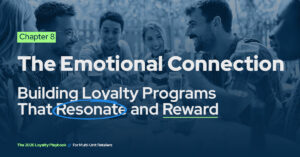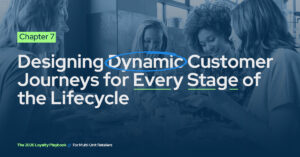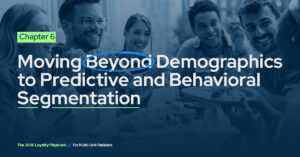The digital media landscape is not just evolving—it’s undergoing a tectonic shift. As third-party cookies crumble and walled gardens grow taller, marketers are desperately chasing the next shiny object, attempting to predict an uncertain future. They are looking everywhere but where the real power lies: within their own four walls.
The era of relying on borrowed data is over. The only sustainable competitive advantage left in paid media is the asset you already own and control: your first-party audience data. This is not a “nice-to-have”; it is the strategy blueprint that will separate market leaders from legacy players.
Imagine owning an exclusive, high-value asset, unavailable to any competitor, that holds the keys to predictable, high-ROI campaigns. That asset is your Customer Relationship Management (CRM) system. It’s time to stop treating your CRM as an operational ledger and start seeing it as the engine for personalized, performant media strategy.
We must move beyond basic retargeting and treat our first-party data as a launchpad for hyper-personalized acquisition. This isn’t just about efficiency; it’s about relevance at scale, creating a data-driven personalization that competitors simply cannot replicate.
The Eight Principles of Data-Driven Audience Ownership
Transitioning from third-party reliance to first-party dominance requires a systematic, eight-step operational and philosophical commitment.
Principle 1: The New Extraction Model
The first step is a strategic one, not a technical one. Stop pulling reports based on existing media segments. Instead, define your desired marketing outcome first (e.g., “identify customers most likely to purchase a luxury tier product within 90 days”) and then engineer your CRM query to deliver only the variables necessary to achieve that goal. This ensures the output is actionable, not just available.
Principle 2: Strategic Segmentation is Non-Negotiable
Generic audience buckets like “all past purchasers” are a relic of the past. The true power lies in micro-segmentation based on highly specific behavioral, loyalty, and psychographic data.
For example, a Quick Service Restaurant (QSR) shouldn’t just target “health-conscious customers.” They should segment for the “Proactive Nutritionist” (who prioritizes no carb or low sugar) and the “Performance Eater” (who seeks high protein and fast fuel). This granular segmentation is the foundation for genuine message-to-market fit.
Principle 3: Creating Proprietary Audience Personas
Here is where the blueprint truly forms. Use your segmented first-party data to craft proprietary audience pools on media platforms. These pools—built on the unique, observable truth of your best customers—are inaccessible to your competition. Forget standard demographics; focus on behavioral champions:
- The Value Seeker: Defined not just by past discounts, but by historical purchase patterns that trigger action only with a specific incentive structure.
- The First-Mover/FOMO Buyer: Characterized by immediate purchase cycles on new products, regardless of loyalty status. This group demands messaging centered on exclusivity and urgency.
- The Loyalty Ambassador: Identified by high lifetime value and a strong alignment with the brand’s mission. They require emotional messaging that reinforces their sense of community and responsibility.
Principle 4: The Omnichannel Media Mandate
Audience creation must precede platform selection. The goal is to deliver a seamless, relevant narrative, not just hit a required number of impressions.
- Search & Intent: Use first-party behavioral data to uncover latent search demand—the high-value, niche terms your proprietary audience uses before they are ready to purchase.
- Social & Behavior: Align your creative strategy with the intent of the platform. For the “First-Mover” on TikTok, this means empowering user-generated content (UGC) or short-form, authentic video—not glossy, polished ads.
- Programmatic & Context: Leverage Display and CTV to create brand equity for new audiences, using your personalized data to ensure you’re reaching the right persona in the right context, effectively manufacturing intent where none previously existed.
Principle 5: Creative is the Ultimate Personalization Engine
This is the moment of truth. Segmentation is useless if the creative doesn’t pay it off. Your “FOMO Buyer” persona should not see a generic ad; they should see a message that leverages exclusivity and urgency (“Only 100 Left,” “Be the First to Taste”). The goal is to move beyond simple ad versioning to emotional alignment, speaking directly to the subconscious triggers that drove them to your data set in the first place.
Principle 6: Leveraging Customized Lookalikes and Predictive Modeling
Designing your media strategy by blindly launching platform-generated lookalikes has no competitive edge in the market. Start with your proprietary audience sets. Build lookalike models off of your clean, hyper-segmented first-party pools. This allows efficient scale and optimization against the highest-value data you possess, creating exponentially larger, higher-quality acquisition audiences that are based on your competitive advantage.
Principle 7: Intentional Execution
Strategy execution must be measured through the lens of performance. Focus on the interplay of reach, frequency, and impact across platforms. The aim is not maximum saturation; it’s optimal engagement. You want to feel personalized, not pervasive.
Principle 8: The Continuous Evolution of the Blueprint
Measurement must extend beyond transactional KPIs like CTR and CPA. The long-term success metric is Return on Ad Spend (ROAS) and Customer Lifetime Value (CLV), measured against a continually refined RFM (Recency, Frequency, Monetary) model. The loop must close: are the new audiences acquired through personalized media upholding the high CLV standards of the first-party data sets we started with?
The future of media effectiveness is not about chasing platform updates; it’s about owning the customer relationship. Your CRM is not just a list—it is your most valuable strategic asset, the only source of truth that no competitor can access. By adopting these eight principles, you move from merely running campaigns to building a data-driven legacy that places your brand in the driver’s seat of the entire customer journey.
The question is no longer “Can we personalize?” It is “How fast can we operationalize our competitive data advantage?”
At Response Labs, we help brands own their data by turning data into decisions, decisions into action, and action into lasting loyalty. If you’re ready to use your first-party data as your competitive edge, we’re here to help. Contact us today to talk about how to get started.




